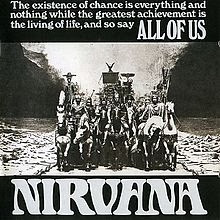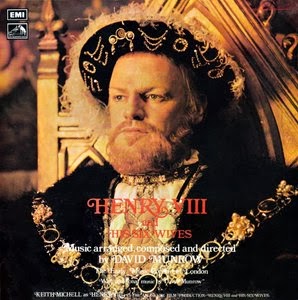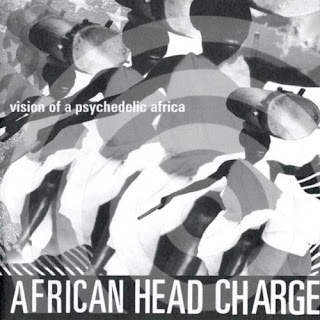To listen to the show just scroll to the bottom of the page
MIND DE-CODER 42
“Psychedelics are illegal not
because a loving government is concerned that you may jump out of a third story
window. Psychedelics are illegal because they dissolve opinion structures and
culturally laid down models of behaviour and information processing. They open
you up to the possibility that everything you know is wrong.”
Terence McKenna
POND
WHATEVER
HAPPENED TO THE MILLION HEAD COLLIDE
The
opening track, or ought that be salvo,
from HOBO ROCKET, the second album release from Pond this year who are clearly
on a roll, featuring a heavy metal assault of guitar riffs, unrestrained drums,
sonic wig-outs and psychedelic trickery. Singer Nick Allbrook howls something
about ‘the holy of holies’, Buddha, Krishna, God and then we’re off – welcome
to mind De-Coder 42
VIDICATRIX PRIVATE PLACES (SHACKLETON AND MORDANT
MUSIC VESRSION) (excerpt)
A
marvellous bit of noise I tagged onto the end of Whatever Happened To…, Private
Places is taken from the 2009 album PICKING O’ER THE BONES, a roundup of long
deleted tracks released on the Mordant Music record label, which is also the
name of the production duo responsible for a hauntologically inspired
dubstep/techno aesthetic, as well as home to a cast of outsiders including
Shackleton and Vindicatrix, about whom, it must be said, I know next to nothing
(I only came across Mordant Music because they were invited to collaborate
on a Ghost Box Study Series single
release with Mind De-Coder favourites The Belbury Poly which I’ve included
later on in the show). On this piece, of
which I only provide an excerpt, Shackleton and MM take Vindicatrix’s Private Places
and turn it into a barely conscious soundscape of echo chamber dub FX and vocal
apparitions and wrap it up in some voodoo rhythms that send it so far out it
never entirely comes back again.
NIRVANA RAINBOW CHASER
Not that Nirvana, who this pair successfully
sued over the name, but a duo consisting of a London-based song writing
partnership who never really achieved any public recognition but who were much
lauded by music industry types and critics alike. Their debut album THE STORY
OF SIMON SIMOPATH, released in 1967, was arguably the first narrative-based
concept album ever released, pipping The Pretty Things’ SF SORROW and The Who’s
TOMMY to the post by a year or two. Rainbow Chaser, which was a minor chart
success in 1968 (it reached the coveted number 1 spot in Denmark despite only
the scratching the top 40 in England), is taken from their second album, the
rather annoyingly titled THE EXISTENCE OF CHANCE IS EVERYTHING AND NOTHING
WHILST THE GREATEST ACHIEVEMENT IS THE LIVING OF LIFE, AND SO SAY ALL OF US,
released in 1968 and often abbreviated to ALL OF US for people who can’t be
doing with that sort of thing at all.
13TH
FLOOR ELEVATORS I’VE GOT LEVITATION
I
don’t even understand this track. Is it supposed to sound like this? Clearly I
mean this in a good way. I’ve Got Levitation is taken from the band’s second
album, EASTER EVERYWHERE, released in 1967, and the whole album is a loose,
hypnotic trip. The strange patterns of Tommy Hall's electric jug playing are as
gloriously bewildering as ever, merging the music of the spheres with an alien
attack, and Roky Erickson's vocals make even the most acid-damaged poesy sound
passionate, graceful, and wildly alive.
THE
LIMIÑANAS SALVATION
The
Limiñanas are something of a revelation – a fuzzy-felt pop folk duo from France
who's wonderful, hook laden songs reach out of the stereo and wrap themselves
around you. By all accounts, one of the highlights of this years’ Liverpool
Psyche Fest, their second album CRYSTAL ANIS, is simple and catchy as hell,
humming with effervescent, alluring pop that benefits from superb production
that seems to put the emphasis in all the wrong places – like the looping
ukulele that opens the album (although, admittedly, that may just be the way I
have my amp set up) – which, of course, turns out to be all the right places.
Heavenly and triumphant; I’m quite the fan.
THE
FOCUS GROUP THE HEAVY BLESSING
The
Focus Group’s ELEKTRIK KAROUSEL has been one of my favourite albums of the year
– an awkward collision between unspooled vintage pop and experimental folk
moments that finds beauty in the strangest places.
THE
OSCILLATION TELEPATHIC BIRDMAN
A
mind-bending track from The Oscillation, whose 2011 release VEILS, combines
krautrock rhythms with full-on guitar driven assaults which radiate a trance
inducing throb that’s both mesmerising and melodic. Pretty much does what the
name suggests.
WHITE
MANNA DON’T GUN US DOWN
Blistering
space-rock from California’s White Manna, whose self-named debut album,
released 2012, pretty much amounts to 40-odd minutes of relentless, sustained
psychedelia of the white-out variety, although on this track there’s just a
touch of the jingle for those of you who need to draw breath occasionally.
TIME
ATTENDANT LAPPING UP AT NIGHT
A little something from the album DOWN TO THE
SILVER SEA, a sort of hauntological trip to the seaside, compiled by the Moon
Wiring Club’s Ian Hodgson. Time Attendant is the moniker under which
experimental musician and painter Paul Snowden releases his aural doodles
which, with the best will in the world, are little more than strange, angular
melodies and drawn out synth drones – but very conceptual ones. . .
SARAH
ANGLISS VERTICAL GALLOPERS
. .
. as, no doubt, are these. Also taken from DOWN TO THE SILVER SEA (released
earlier this year), Angliss at least adds a touch of the seaside to the
composition. There’s always a touch of the uncanny about her work – she’s a
composer, automatist and sound historian who builds robots to play her tunes –
but this track reminds me of haunted piers and ghostly Victorian fairground
rides.
CLEAR
LIGHT THINK AGAIN
Named
after a particularly potent brand of LSD, Clear Light were a folk rock/psyche
rock group from LA whose big thing was that they had two drummers. They
released just the one album, SAME, in 1967, before returning to, or perhaps
becoming, a footnote in musical history. In fairness, they should have done
better than they did – SAME has some pretty far out tracks on it with some spot
on psychedelic flourishes, but the album failed to sell and the band split up
shortly after.
ULTIMATE
SPINACH EGO TRIP
Ultimate
Spinach’s Ian Bruce-Douglas (composer, lead singer, multi-instrumentalist) is,
to this day, derided as a fourth rate Jim Morrison, Grace Slick or Country Joe
McDonald, whose band was never able to scale the giddy heights reached by The
Doors, Jefferson Airplane and Country Joe and the Fish – even contemporary
re-evaluations of his band find them wanting and worse still, derivative, as if
the best they were capable of was sounding like a recombination of all those
West Coast psychedelic bands he so desperately wanted to compete with (Ultimate
Spinach had the added misfortune of hailing from a very un-rock ‘n’ roll
Boston). That being said, their self-titled debut album, released 1967, sold
110,000 in its first week and remained in the charts for 36 consecutive weeks
and is not without its merits – I’ve always been very fond of album opener Ego
Trip, me.
STEREOLAB SPACE MOMENT
A
track that pretty much does what it says on the label, Space Moment is to be
found on the mini-album MUSIC FOR THE AMORPHOUS BODY STUDY CENTER, created in
collaboration with New York sculptor Charles Long to accompany an exhibition he
held in 1995 (although for people unable to get their hands on a copy of the
limited edition pressing the whole EP turned up on one of the group’s many
retrospective albums ALUMINIUM TUNES: SWITCHED ON, VOL. 3 which, admittedly, is
where I first came across it). It really is quite lovely; one of my favourite Stereolab
moments, combining their early trademark drone-sound with their emerging easy
listening, 60’s pop inclinations.
CRANIUM
PIE MASTER OF MYSTERY
A
short bit of filler taken from the band’s second album GEOMETRY OF THISTLES , a
selection of highly psychedelic tracks recorded between 2006 and 2009, released
2012, but none the less magical for all that. The journey into mushroom land
starts here.
THE
END LOVING SACRED LOVING
A
lovely piece of psychedelic whimsy from The End, a band you really ought to
have heard more from but whose chances of success were scuppered when the
release of their only album INTROSPECTION was held back for some 18 months
until 1969, by which time the world had embraced a slightly more robust take on
music and psychedelic whimsy had already become dated. A pity, as the album is
not without its charms as demonstrated by Loving Sacred Loving which also saw
release as the b-side to the album's only single Shades of Orange, released in 1968.
These days if you’ve heard of them at all, it’s because of the Bill Wyman
connection, who managed the band and had them touring as support for the Stones
during their Satanic Majesties Request days. Legend has it that Shades of
Orange and Loving Sacred Loving were later confused by bootleg collectors as
being Stones tracks that were unused from that album and that The Beatles
appeared on them, what with them being so psychedelic and all. Sadly not true,
but this track was written by Wyman and includes Nicky Hopkins on harpsichord,
trivia fans.
DAVID
MUNROW LE PETITE GENTILHOMME
Something
of a searing lute solo, this track can be found on the soundtrack to HENRY VIII
AND HIS SIX WIVES, released back in 1972. I first came across Munrow in Rob
Young’s masterful book 'Electric Eden' in which he unearths the story of the folk
revival in the British Isles. Munrow emerged as a leading light in the early
music and Renaissance movement of the 1960’s and 70’s which, by all accounts,
he brought to life in performances of unsurpassed brilliance. I’ve been meaning to play him on the show for
ages, but lute solos aren’t as easy to segue in as you’d think.
I
follow that with a reading of Pablo Neruda’s IF YOU FORGET ME, read by La
Ciccone of all people, but having listened to several recordings of the
poem, it turns out hers was the best.
NICK
NICELY THE MOURNING
I
was so excited to hear this - a newly recorded version of nicely’s psychedelic
classic Hilly Fields (1892), reinterpreted by nicely (one only uses lower case)
himself for the semi-legendary Fruits De Mer record label, some 30 years after
the original release. In this version, released on 7” vinyl with the original recording
on the b-side, nicely turns in an elaborate and indeed delicate acoustic version
that is as every bit as tripped out as the original. For those of you who are
new comers to Mind De-Coder, Hilly Fields (1892) is arguably the greatest psychedelic record to
have come out of the 80’s.
MORDANT
MUSIC INN OHM THE LAKE
You
know, I had to play this on the strength of the title alone, but it’s
nevertheless a trippy little piece that can be found on the single GHOST BOX
STUDY SERIES 3: WELCOME TO GODALMING, released in 2010 by the Ghost Box record
label, of course. They share the release with Ghost Box co-founder Jim Jupp’s
Belbury Poly with whom they share an interest in similar long-haunted byways of
sound. Looping voices full of post-war pedagogical advice, humming drones,
children’s songs and reverb drenched sounds abound.
THE
NATURAL YOGURT BAND VOODOO
The
Natural Yogurt Band are the day job for Miles Newbold who under his guise as
The Sign Of Four had a track played on Mind De-Coder a little while ago which
fairly reverberated with sonic going’s on and polyphonic sound textures. He
burst onto the scene (inasmuch as it can be said that he actually burst
anywhere) in 2008 with the album AWAY WITH MELANCHOLY, from which the fairly
irresistible Voodoo is taken, a stirring mix of jazz and funk although,
crucially, not jazz-funk but
something that uses elements of each to take the listener on a pretty far out
journey to some place completely else – cinematic, funky and at times mellow,
other times modal, it was quite possibly a pastiche of all these things, a
faux-vintage record with the tunes to carry it through the sum of its parts.
ARIEL
KALMA MESSAGE 18/10/77
Ariel
Kalma seems to be a little known synth-pioneer who appears to have been doing
something a bit world music-y and Body-Shop-CD-rack since the mid-70’s at
least, but don’t let that put you off. Message 18/10/77 is from the album
OSMOSE, released in 1977 and, as one reviewer has put it, it’s sort of like
Vangelis getting lost in the Amazonian rain forest 35 years ago, but don’t let
that put you off either – take away the New Age bird calls and insect noise and you're left with something approaching a perfectly serviceable Spacemen 3 drone.
I
have it float off into something really quite wonderful – a recording of
crickets with their sound slowed down to equivalent of a human lifespan and
sounding like a choir of angels praising creation (is this what they sound like
to each other, I wonder?), recorded by Jim Wilson who then pasted the actual
sound of crickets over the top of it for pleasing effect – it actually goes on
like that for an hour or so and remains spell-binding throughout - you can check out the whole track here; and whilst
that was playing I added the sound of a piano tuner replacing a string on the
family piano, which she let me record whilst she was doing it because I thought
it sounded really cool. This is mind De-Coder.
ROBBIE
BASHO THE GRAIL AND THE LOTUS
Transcendental
guitar playing from Robbie Basho, a mystical minstrel heavily influenced by
Hindustani classical guitar, who, in 1966 released his second album THE GRAIL
AND THE LOTUS, a great lost psychedelic album from an artist who kind of
transcended the genre.
VASHTI
BUNYAN HERE BEFORE
Wistful
loveliness from Vashti Bunyan with a track from her sublime second album
LOOKAFTERING, which came some 36 years after her first; her voice is gorgeous,
pristine and precious.
THE
VELVET UNDERGROUND SISTER RAY
And
the show comes full circle with a track that’s not so much a song as an
assault. Sister Ray, from their 1968 release WHITE LIGHT/WHITE HEAT, is the definitive Velvet Underground statement
in which everything is turned up to 11and the studio bleeds into the production
– Reed’s tale of a bunch of drag queens taking some sailors home with them,
shooting up on smack and having this orgy when the police appear is by no means
a psychedelic piece of music, but the overall effect is so overwhelming, the
distortion and frequencies set so high, that the senses are simply broken down
and rearranged in a proto- heavy metal haze that disorientates and thrills at the same
time, and if that isn’t psychedelic then I don’t know what is.
Facebook













.jpeg)


































